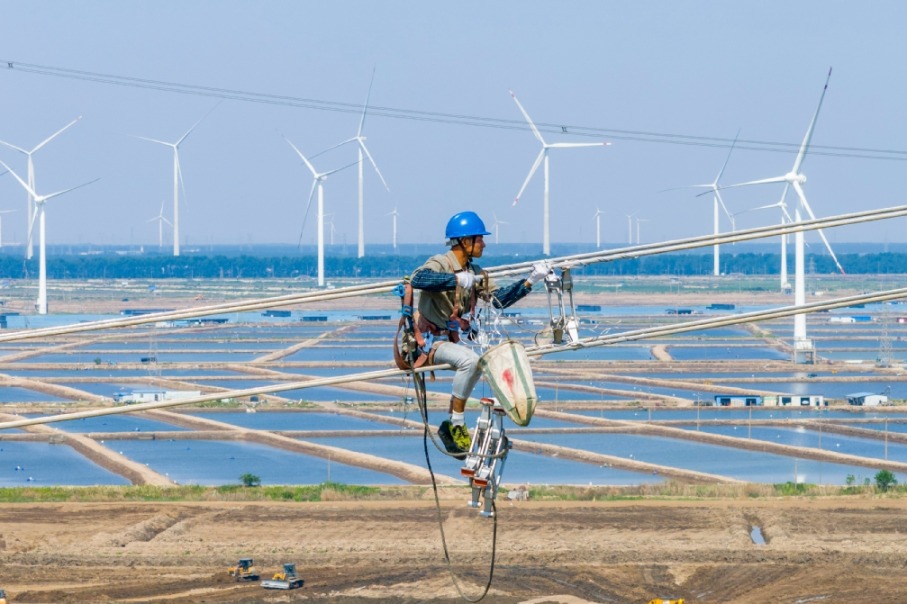Better future for Chinese farmers

Raising agricultural production and rural incomes requires easier transfer of land and equitable public services. China's 12th Five-Year Plan (2011-2015), which was approved this year, lays out the country's strategy to develop the agriculture sector over the next five years.
The plan has a series of objectives for the development of agriculture and rural regions and these goals, if realized, will elevate China's rural economy to a new level.
The objectives can be divided into three parts: steadily increasing grain output; deeper reforms to provide equal public services for urban and rural residents; and new measures to raise the income of farmers.
According to the plan, in the coming five years, the grain production of China should realize a capacity increase of 50 million tons, which might prove difficult since there are several restricting factors.
With the uneven development of rural and urban areas, as well as the small portion of land every farmer has, the income received for toiling in the fields is lagging further and further behind that obtained from laboring in the cities. That huge gap has forced many farmers to give up agriculture to become migrant workers in the cities, thus leaving large areas of arable land unfarmed.
Agricultural production is increasingly concentrated in major agricultural regions. But it is difficult to raise production efficiency and competitiveness because only about 10 percent of land is transferred, which makes it difficult to expand the scale of production, except for the Xinjiang Uygur autonomous region and Northeast China. Increasing urbanization is also claiming farmland in these regions. Therefore it will be a formidable task for the country to meet its goal of increasing grain output by 50 million tons over the next five years.
Another objective of the plan is setting up a mechanism to offer equal public services to people in urban and rural regions. Public services include infrastructure and maintenance, basic social welfare, maintaining legal order, and providing other services to meet educational and cultural needs.
For decades, there have been differences, both in quantity and quality, in the public services offered in urban and rural areas. The situation has improved in recent years, but problems still exist.
In the 12th Five-Year Plan period, the country should make it a priority to ensure that the transfer of labor and rural land can be made according to the law and market rules so that farmers can have a better life in cities and land can be used in a more efficient way.
This requires the government to solve three problems: reform of the current hukou system so rural residents who give up agriculture can become urban residents; the setting up of a unified market for urban and rural land resources; and establishing the basis for a unified welfare system to cover urban and rural residents.
Currently the central government only has guiding principles on the three issues and local governments are following different practices. Since a legal framework may not be established within five years, local governments should try to overcome the difficulties and meet these goals, while the central government should press ahead and deepen reforms.
The third objective, of raising farmers' incomes, also needs to be reformed. We are still facing the problem of inaccurate or incomplete data when it comes to farmers' incomes. Statistics provided by some departments include rural residents' income from non-agricultural sources. In other words, the statistics include the wages of migrant workers who are no longer farmers. This accounts for a large part of rural incomes and it is still increasing.
In fact only the incomes of those who depend on agriculture for a living should be counted as farmers' incomes. But as yet, we do not have a clear picture of the incomes of this group of people.
From a long-term perspective, the key to promoting farmers' incomes should be supporting more professional farmers, expanding their business scale and making them more competitive in the global market. To this end, farmers' rights to their contracted land should be protected for a long period of time and new types of rural cooperatives should be cultivated.
The author is a rural development researcher with the Chinese Academy of Social Sciences.
Today's Top News
- Xi urges villagers in Xizang to uphold ethnic solidarity
- Digital tax sparks breakdown in US-Canada trade talks
- Expert debunks Lai's 'four elements' argument for Taiwan's so-called statehood
- China opposes any tariff deal made at its expense: commerce ministry
- Nepal's hydropower a climate change solution
- UN Charter still guiding compass of humankind






























